Let’s Debunk These Common Ostomy Myths

After ostomy surgery, you may find helpful tips from other people living with an ostomy in online communities, support groups, forums and more. Weeding through the fact and fiction can be difficult. We asked certified ostomy nurses to outline some of the most common myths they hear to provide you with the truth about living with an ostomy.
Myth: Only use the ostomy pouching system that you were fitted with in the hospital or doctor’s office.
Fact: In the weeks and months following ostomy surgery, you may find your stoma and body changing. In the first few weeks and months post-surgery, your ostomy pouching system may need to be changed also.
Myth: All ostomy products are the same. It doesn’t matter what type of pouching system you wear.
Fact: There are a large variety of ostomy products available to fit the needs of each person living with an ostomy.
Myth: Your stoma should not change size a few months after surgery.
Fact: In the weeks and months following ostomy surgery, your stoma may change in size and appearance.
Myth: Having skin irritation is a normal way of life with an ostomy.
Fact: If the skin around your stoma becomes damaged, it could be painful and lead to infection. Prevention is the key to maintaining both healthy peristomal skin and your comfort.
Myth: If you have an ostomy, your significant other will not love you the same way.
Fact: It is common to have anxiety about relationships following ostomy surgery. Be open and honest with your partner about any concerns you have. Remember, having an ostomy is nothing to be ashamed of.
Myth: Odor is a part of life when you have an ostomy.
Fact: You will become more comfortable with your ostomy pouch over time, and will gain confidence in its ability to retain odors.
Myth: Now that I have an ostomy, I am no longer able to enjoy the foods I love.
Fact: Right out of surgery, you may be more sensitive to foods than you will be in six months. Slowly add different foods to your diet, and pay attention to your body’s response.
Myth: I have a colostomy or ileostomy so I shouldn’t be passing anything from my rectum.
Fact: The colon or rectum may produce mucus even after ostomy surgery. If you have questions about your output, contact your healthcare professional.
Myth: I can’t get my pouch or wafer wet, which means I can’t enjoy water activities or bathe with my pouching system in place.
Fact: You can shower, go swimming, or even get in the hot tub with your pouching system in place. If using a pouch with a filter, cover the filter with the covers provided.
Myth: Don’t shower without your ostomy system off.
Fact: You can shower with or without an ostomy system in place.
Myth: An ostomy prevents you from wearing stylish, form-fitting clothing. People will be able to see that I have an ostomy.
Fact: Before you had ostomy surgery, did you notice an ostomy pouch on other people in public? Probably not. Try a wrap or special undergarments to help conceal your pouch and increase your confidence.
Myth: Insurance doesn’t cover ostomy care, so I am paying out of pocket for my supplies.
Fact: Contact your insurance coverage provider to understand what your insurance plan covers and pays for ostomy supplies.
Myth: You should rinse and/or reuse your pouches.
Fact: It is not recommended to rinse or reuse ostomy systems, pouches or wafers. Water can make the barrier break down faster and damage the filter of the filtered pouches.
Myth: People living with an ostomy cannot fly, because the cabin pressure can cause the pouch to fail.
Fact: People living with an ostomy can fly, ride in a car, or use any other mode of travel.
More information from ConvaTec
Editor’s note: This educational article is from one of our digital sponsors, ConvaTec. Sponsor support along with donations from readers like you help to maintain our website and the free trusted resources of UOAA, a 501(c)(3) nonprofit organization.


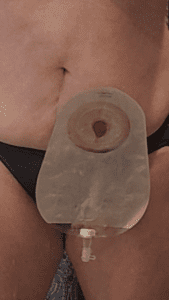
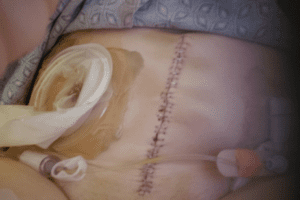 I was not in a great deal of pain which was easily managed with Tylenol. I was definitely weak, but otherwise ok. I went home in 4 days, on my own with my urostomy.
I was not in a great deal of pain which was easily managed with Tylenol. I was definitely weak, but otherwise ok. I went home in 4 days, on my own with my urostomy.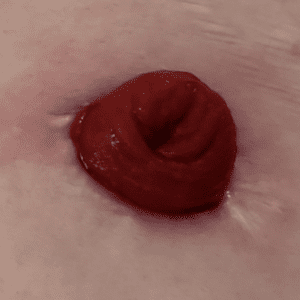 Rudolph, my red, round stoma
Rudolph, my red, round stoma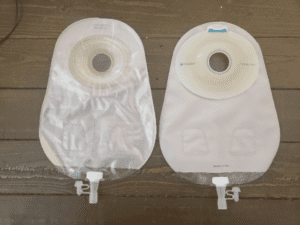
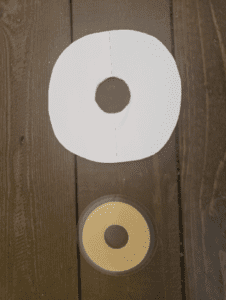
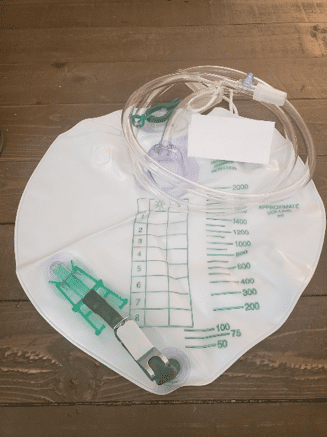 Night Drainage Pouch
Night Drainage Pouch


